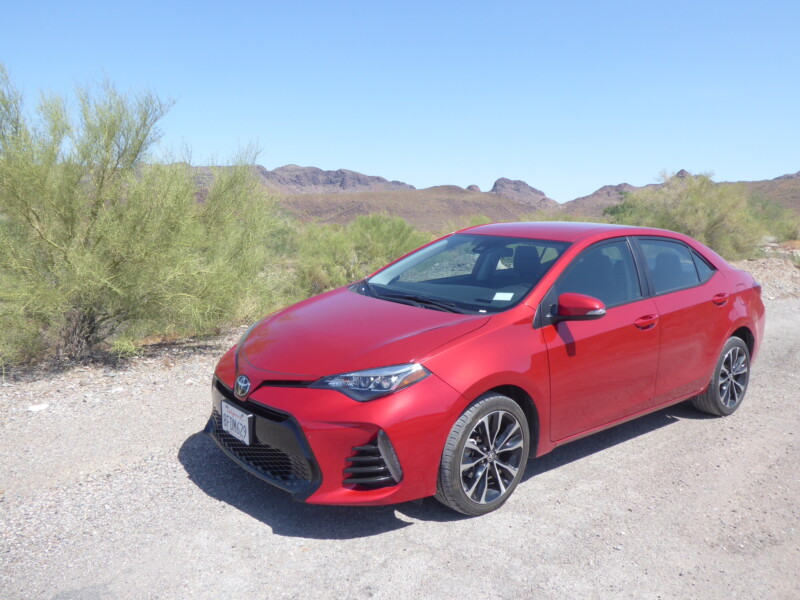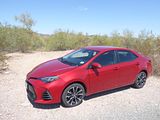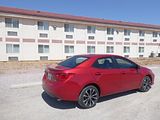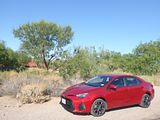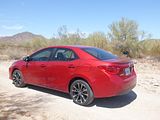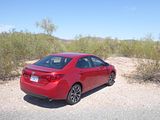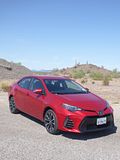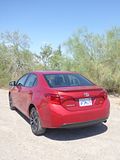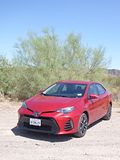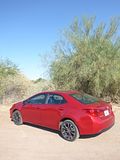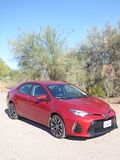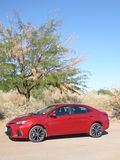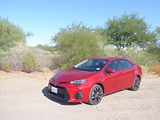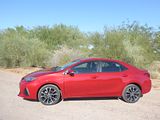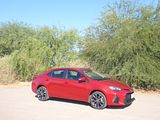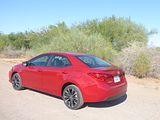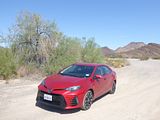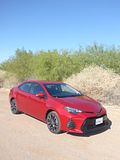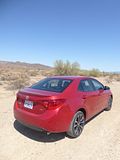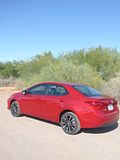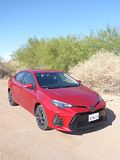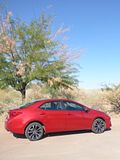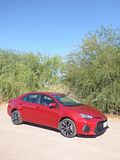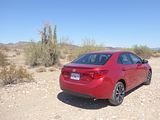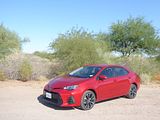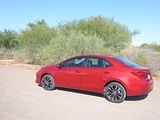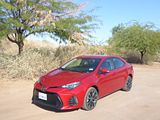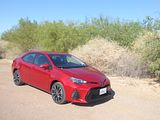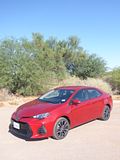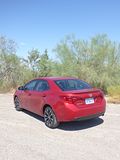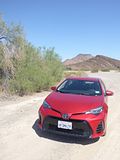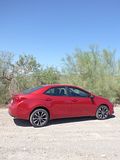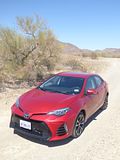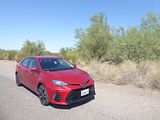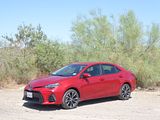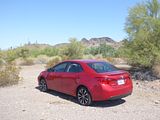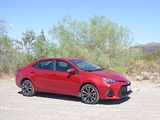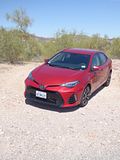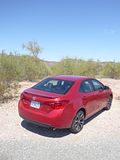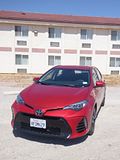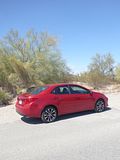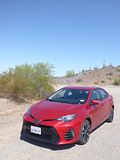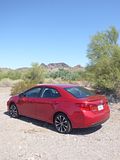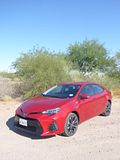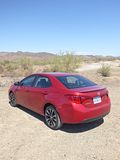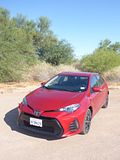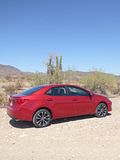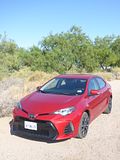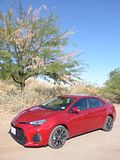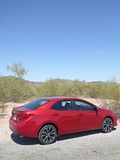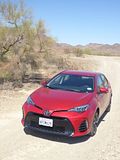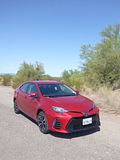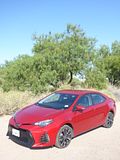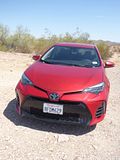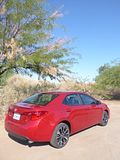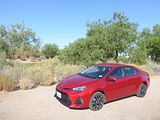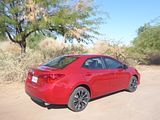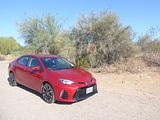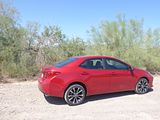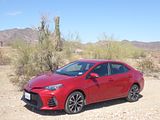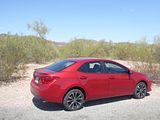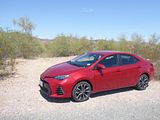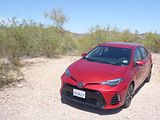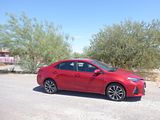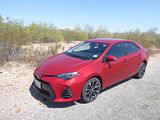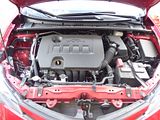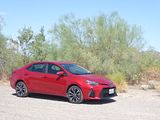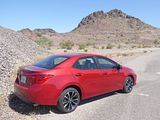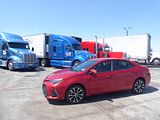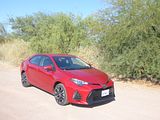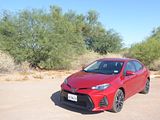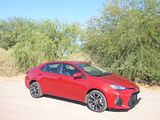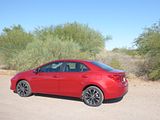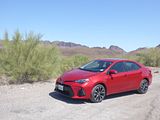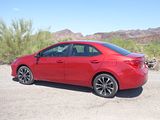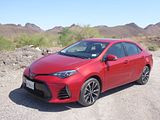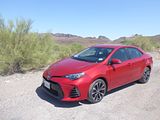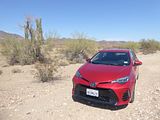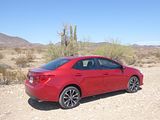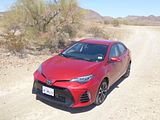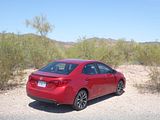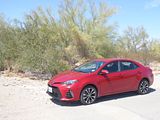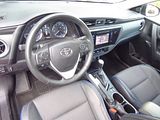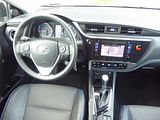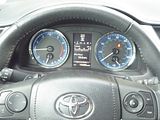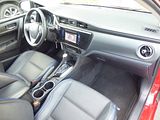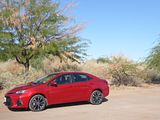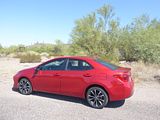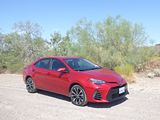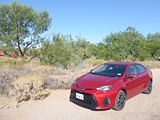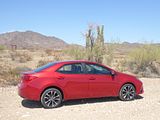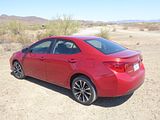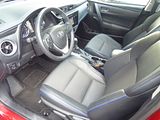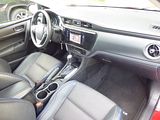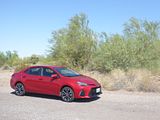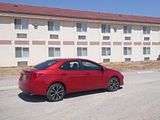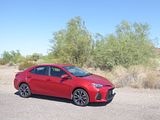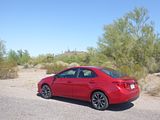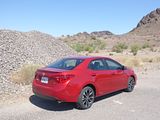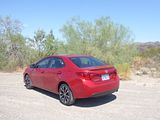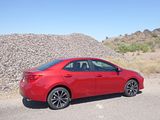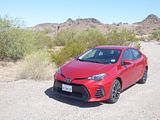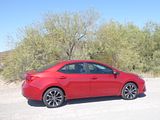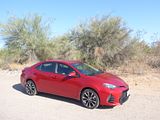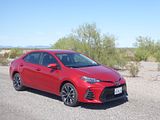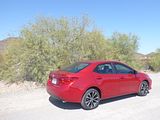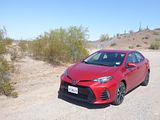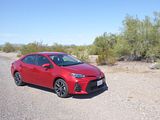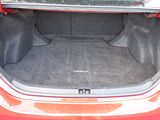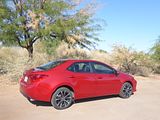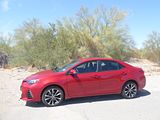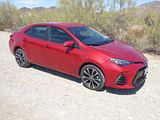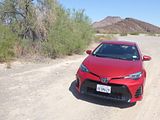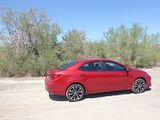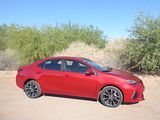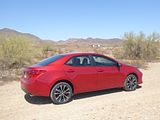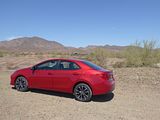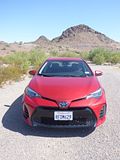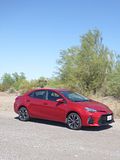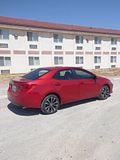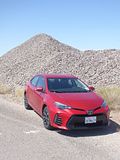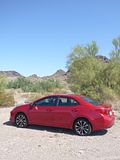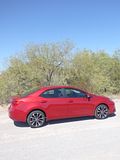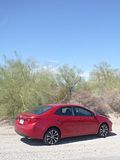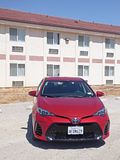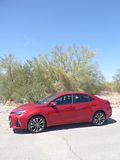The Toyota Corolla is almost certainly the best selling car in the world, and it has been for a considerable number of years. “Almost certainly”, as it depends on how you count and what you include, both in terms of the Corolla itself and some of its rivals. As many manufacturers who have tried to produce a truly global car have found out, there remain sufficient differences in what buyers in any given market look for compared to any other, that even if the basic elements of a car are indeed the same whether you are looking at it in Europe, America or Asia, then there will be plenty of differences under the skin, and often more than a few which are visually apparent, as well. Until very early in 2019, there has been no car badged Corolla in most of Europe since 2002 when the Auris nameplate was introduced, in a deliberate attempt to try to change the image of a car which was seen as just too dull that was competing in a market sector where an element of style and panache was of growing significance. Whilst Auris sales were never massive, and certainly not as numerous as Toyota would have wished, if you don’t include them in that global total, then it is possible that the Corolla was pipped to that global sales leadership position. Perhaps of more concern to Toyota Execs was the fact that for more years than people could remember in America, until recently the world’s largest automotive market, the Corolla played second fiddle only to its larger stablemate, the Toyota Camry, both of which consistently outsold the equivalent Honda products by a small margin, month after month, and everything else by a much larger one. During the last few years, though, things changed here. The Camry was dethroned from its position as best-selling passenger car in the US, as one of the family sized SUVs including Toyota’s RAV4 as well as Honda and Nissan rivals achieved sales supremacy, and all the passenger cars saw sales volume reduce as this genre of vehicle proved ever more popular. Toyota’s eleventh generation Corolla was launched late in 2013 as a 2014 model, and was a cautious evolution from the car it replaced. It did not fare well in comparison tests, generally being placed in the bottom quartile, its blushes only spared if a Nissan Sentra was included as well. Whilst its ease of ownership, fuel economy and particularly spacious rear seat drew praise, the insipid driving dynamics, relatively gutless engine and the retention of a four speed auto box when everyone else was on six or more ratios, as well as a rather ho-hum interior all suggested that Toyota had rested too hard on their laurels and produced what they thought they could get away with rather than something which would genuinely stun the opposition. As is often the case, the buyers thought otherwise, and the Corolla has continued to sell well in America, though not as well as before, and more significantly not as well as the controversially styled, but in all other respects excellent Honda Civic. A mild update in 2017, with mild styling tweaks especially to the front end, a host of new safety features and a reshuffling of the trim levels did nothing to stop the gradual sales decline.
I last drove a Corolla in America in 2015. I took the same view as the US press had done, finding a car that was perfectly acceptable but which so clearly could have been so much better had Toyota tried something more than a very cautious progression from all the previous models to bear the name. For a while this was one of the most ubiquitous cars in the US rental fleets, and it was almost impossible not to risk getting another one, but gradually, they started to disappear, reduced in numbers in favour of more impressive opponents such as the Hyundai Elantra, Kia Forte and Chevrolet Cruze, as well as a far greater number of crossovers. So the facelifted models largely passed me by, and with the launch of an all-new twelfth generation model, initially as a hatch which hit the streets in mid 2018 and then the saloon which arrived in mid 2019 as a 2020 model year car, it looked as if I was only to get one eleventh generation Corolla experience. But as is often the case, Hertz seemingly bought quite a few of the outgoing model at the very end of production. Arriving at LAX in September 2019 for a two week trip, I noticed that they also had a number of the new ones on fleet as well. I decided that it would be interesting to try to get hold of a 2019 car on one day and then a 2020 model the following one, so I could evaluate first hand just how different and hopefully better the new car would prove to be. That was the plan, but it did not quite work out that way. For various reasons, I did not secure a 2019 model in Los Angeles, but thought it might be easier to do the test in Phoenix, fearing (correctly as it turned out) that car availability there would be far more limited, confident that there would be Corolla models available. Availability was so limited that most of the time there were not, but I did secure the subject of this test, a 2019 model Corolla SE, in a rather attractive shade that Toyota call Barcelona Red, But Phoenix has not yet received many new season models on their fleet, so the new 2020 Corolla has not been in evidence there at all, so the second half of the comparison has yet to happen. Whilst I am sure it will, it will rely more on notes and memory than I had planned to be able to assess the scale of improvement. For now that means that this assessment is a stand-alone one, considering the car in isolation.
Most of the Corolla models in the rental fleets these days are the SE trim, though there are some LE models out there. You can tell them apart, even without looking at the badge, as the SE sports rather trendy looking diamond cut 17″ alloys, wears a prominent spoiler on the boot and the front has a gloss black surround to the grille. Mechanically, the SE and LE are the same, so although you are getting a sportier look, the driving experience is not going to differ. A 132 bhp 1.8 litre engine powers the car, and unless you specified the 6 speed manual that is available only on the SE, you get a CVT gearbox. The power output is somewhat less than you will find in most rivals, but the Corolla is still relatively light, so in practice, is does not make the car feel as slow as you might fear. My previous test of this generation of Corolla found the CVT gearbox to be a real letdown, with the transmission constantly struggling to adapt to the requirements made of it, and the car ended up being very noisy. I did not experience the same frustrations at all this time. It could be that last time the test route was in the hills, whereas this time it was mostly on flat roads with a lot of steady speed cruising on the 10 freeway. Whilst there, noise low levels proved pleasingly low, with engine, wind and road noise all well suppressed. Whilst you would never call this Corolla rapid, it is well up to keeping its place in the flow of traffic and can accelerate into gaps in traffic when the need arises. There is a Sport mode, and whilst this might seem a little incongruous in a car like this, pressing it did sharpen up the throttle, steering and suspension and made the car feel that bit more eager. I covered 340 miles during my day with the Corolla and it needed just 9.3 gallons to fill it, which computes to 36.55 mpg US or 43.67 mpg Imperial, a creditable result.
Previous Corolla models have been notable for their steering set-up which prioritised lightness over any trace of feel. Thankfully, the SE, with its slightly more sporting pretensions, gets the balance better, with a set-up which whilst still make the Corolla easy to drive does not feel so numb that you wonder what the steered wheels are going to do. It’s a long way short of the standard of precision and feedback that Mazda and Ford endow their cars with, but a big improvement on what I have experienced before, feeling crisper and less soggy. Not that you are going to feel that you are in a sports sedan here when it comes to any curves in the road. This is a front wheel drive car set up to be utterly predictable. It holds the road well, and will understeer once you apply any gusto to cornering, but the quid pro quo is a ride that is still soft and compliant despite the so-called sports suspension and those 215/45 R17 alloys. When you first press the brake pedal, there is a rather mushy feel to it, but as you press harder then you can feel the discs doing your bidding and they will stop the car as you would wish, you just have to get to use that initial dead feeling to the pedal. A conventional pull-up handbrake is fitted between the seats. Visibility is generally good, with a wide field of view from the heated door mirrors and the rear-view camera made judging the back end straight-forward. Toyota has added a number of safety features as standard in the Corolla, deciding to make a virtue of these. All sedan models come standard with Toyota Safety Sense P, which includes a pre-collision system with pedestrian detection, lane departure alert with steering assist, automatic high beams, and adaptive cruise control.
The interior of this Corolla was less low rent looking than previous ones have appeared, though the basic design has not changed since the 2013 launch. Blue stitching across the dash, a gloss black inlay around the infotainment screen and judicious use of chrome highlights help, as does the use of nicely texture and soft-ish to the touch plastics for the main dash moulding and door casings, though there are plenty of rather less quality hard plastics used, too. The dash layout is very much as before and is almost pleasingly simple. There are just two dials, with fuel level and water temperature gauges inset. A blue outer rim adds a little colour to them. There is a digital display area between the instruments and you cycle through the trip computer options using buttons on the right hand steering wheel spoke. The wheel also features audio repeater buttons. Cruise control is from a stubby stalk to the right of the wheel, and two larger items are used for indicators and lights which had an auto setting on the left and wipers on the right. The centre of the dash contains a separate digital clock display are straddled by the central air vents. Below this is the display unit for the infotainment system, which Toyota call Entune. Even in this SE trim, it is relatively basic, with AM/FM radio and some usage related data including a bar chart to show economy over the last 15 minutes. There are only two knobs, for on/off and volume and for radio tuning, everything else is done from the touch screen. You still get a CD player, with the slot above this unit. Automated climate control features and there are buttons for this below the infotainment screen.
SE trim means half leather covered seats, and there is some blue contrast stitching to provide some visual variety. They proved surprisingly wrap around, so those of the larger figure may find them a little constricting, whereas I found them very supportive and with the side grip that you would need were you to corner more enthusiastically than the car is designed to do. Adjustment is manual, as you would expect, with a height adjuster for the driver but not the front passenger. The wheel telescopes in/out as well as up/down and the seat belts have height adjustment to them, too. The resultant driving position was spot on, and I felt comfortable behind the wheel, which was just as well considering the long haul to close to the State boundary and back which constituted the test journey.
Rear seat space has always been a real strength of this generation Corolla, with notably more room than you will find in any of its rivals, or indeed in some cars a class above it. Even with the front seats set well back, there is ample space for legs and there is a nice flat floor across the car. The relatively square styling means that there are no headroom compromises, though whilst this car is considerably wider than previous generation cars, it would still be a bit tight for three adults across the seat. There is a drop down central armrest, which has cupholders in the exposed upper surface. Just the passenger seat has a map pocket in it and there are bins on the doors, shaped to house a bottle in them.
The boot is a good size, too. There is no external release, so you will either have to use the button on the key fob or to pull the release by the driver’s seat to gain access. The boot lid is still single skinned and feels relatively insubstantial. There should be ample space for four people’s luggage in here. There is a space saver under the boot floor, though not much space to tuck anything around it. The rear seat backrests, asymmetrically split, fold forward to give a much longer load area if required. Inside the cabin there is a massive glovebox, a small cubby under the central armrest, an area in front of the gearlever and there are bins on the doors for those odds and ends that everyone needs around them.
There are five different trims available for the 2019 Corolla, L, LE, SE, XLE and XSE. Mechanically they are all the same, with a 132 bhp 1.8 litre 4 cylinder engine and most of them have the CVT automatic transmission. The entry-level sedan trim level is the Corolla L. With a starting price of $18,700, this edition comes with the Entune Audio system, which consists of a 6.1-inch touch screen, six speakers, Bluetooth, a USB port, voice recognition, and Siri Eyes Free. It also features a rearview camera and Toyota Safety Sense P, which includes a pre-collision system with pedestrian detection, lane departure alert with steering assist, automatic high beams, and adaptive cruise control. Automatic climate control is among the few interior enhancements added to the Corolla LE. This trim comes with the standard sedan engine for $19,135, and there are larger 16″ wheels. The LE Eco has a slightly more powerful and more fuel-efficient 140 bhp version of this same engine, and costs an additional $400. The SE is the Corolla’s sport-oriented trim. Edgier exterior styling, with a rear boot spoiler, diamond cut 17″ alloys and gloss black detailing around the front are the recognition points and the there is also an added Sport driving mode, leatherette upholstery, a proximity key, and push-button start are among its upgrades. Pricing starts at $20,645. This is the only sedan model that has an available six-speed manual transmission. There is a $1,220 upgrade available which adds a moonroof and the Entune Audio Plus interface, which features a 7-inch touch screen, satellite radio, HD Radio, and navigation. The Corolla XLE and XSE build off the LE and SE trim levels, respectively, adding a handful of swanky enhancements. Standard amenities include leatherette upholstery, an eight-way power-adjustable driver’s seat, heated front seats, a leather-trimmed steering wheel, a moonroof, proximity key entry, push-button start, and the upgraded Entune Audio Plus system. Prices start at $22,135 for the Corolla XLE and $22,880 for the Corolla XSE.
No question about it, this Corolla SE was by some margin the “best” Corolla I’ve driven. I still would not say that it is anywhere close to being a class-leader for anyone who enjoys their driving, but for those who value what have always been traditional Corolla strengths of ease of use, painless ownership, fuel economy and roominess, as well as the array of standard safety features, and proven reliability this Corolla has plenty to commend it. Add in the fact that finally this is a Corolla that has some steering feel and which does not feel utterly castrated to drive, and an interior whose quality is significantly better even than the last 2015 car I drove. and you can see why it still does sell as well as it does. The 2020 car is supposedly a league apart and I look forward to finding out just what that means from behind the wheel in due course.

